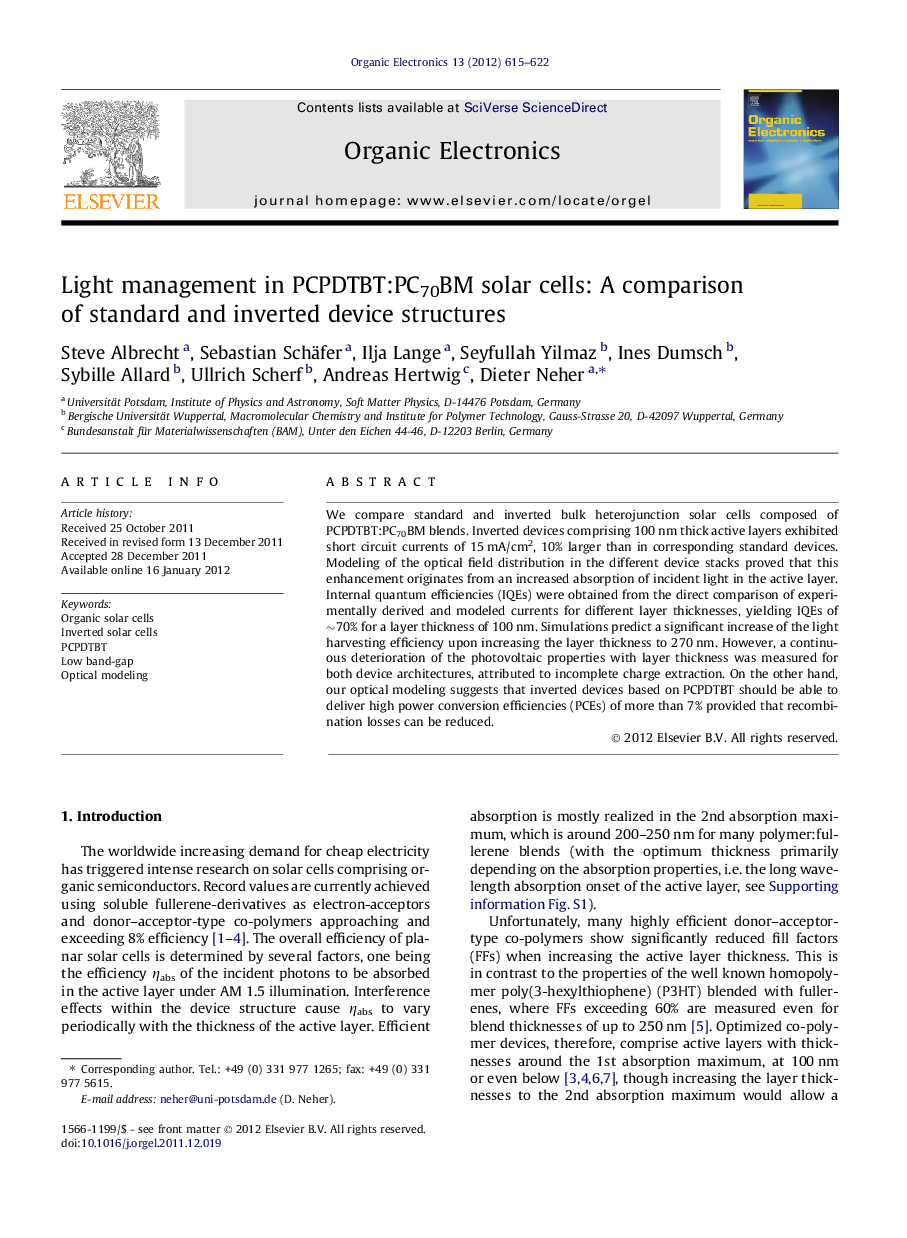| Article ID | Journal | Published Year | Pages | File Type |
|---|---|---|---|---|
| 1264597 | Organic Electronics | 2012 | 8 Pages |
We compare standard and inverted bulk heterojunction solar cells composed of PCPDTBT:PC70BM blends. Inverted devices comprising 100 nm thick active layers exhibited short circuit currents of 15 mA/cm2, 10% larger than in corresponding standard devices. Modeling of the optical field distribution in the different device stacks proved that this enhancement originates from an increased absorption of incident light in the active layer. Internal quantum efficiencies (IQEs) were obtained from the direct comparison of experimentally derived and modeled currents for different layer thicknesses, yielding IQEs of ∼70% for a layer thickness of 100 nm. Simulations predict a significant increase of the light harvesting efficiency upon increasing the layer thickness to 270 nm. However, a continuous deterioration of the photovoltaic properties with layer thickness was measured for both device architectures, attributed to incomplete charge extraction. On the other hand, our optical modeling suggests that inverted devices based on PCPDTBT should be able to deliver high power conversion efficiencies (PCEs) of more than 7% provided that recombination losses can be reduced.
Graphical abstractFigure optionsDownload full-size imageDownload as PowerPoint slideHighlights► We found 11% higher absorption for inverted devices compared to standard structures. ► The more favorable optical field inside the inverted device is rationalized via optical modeling. ► IQEs show a steeper drop with increasing thickness for inverted structures. ► The comparison at −1 V shows very comparable IQEs for both device architectures. ► Our optical modeling predicts efficiencies above 7% for thick inverted devices.
